The influence of German industrial designer Dieter Rams – Less is more
Apple designer Jony Ive brought to Apple the ideas of the German industrial designer Dieter Rams, who had developed key stylistic elements while working for the electric equipment manufacturer Braun. “Less is more” – Rams’ policy became then the design credo of Jony Ive and Steve Jobs. With the first iMac G3, Ive converted the typical beige PC box into a semitransparent, candy-like design statement. With the PowerBook made of Titanium and Aluminum and the PowerMac G5, Ive paid homage to his role model Dieter Rams, who had designed a similar-looking aluminum case for the legendary World Receiver T1000 as early as in 1963.


In 2007, the first iPhone was created, and the calculator app on the first iPhone was nothing else than a copy of the ET44 calculator body, which Rams had designed for Braun 20 years ago.

See also:
Dieter Rams talks about design at Apple » Mac History.
1998, Steve Jobs summarized the spiritual foundation of Apple’s new design basic law as follows: “Simplicity is the ultimate sophistication,” Jobs had aimed for the simplicity that comes from conquering complexities, not ignoring them. “It takes a lot of hard work,” he said, “to make something simple, to truly understand the underlying challenges and come up with elegant solutions.” (Isaacson, Page 387) For Jobs it was not about cheap fashion effects. “Fashion is what seems beautiful now but looks ugly later,” Jobs said to his biological sister Mona. “Art can be ugly at first but it becomes beautiful later.” Now Apple computers were not only physically different, but the software of the Mac now had a new foundation as well.
In September 2000 Apple released the first public beta version of the new operating system Mac OS X, which was based on the NeXTStep software. The Apple designers put the new Aqua user interface over the UNIX core. This user interface was inspired by the design of the iMac G3 and was characterized by transparent menus, bright pinstripe patterns, and large icons. In the past eleven years, Mac OS X has been constantly developed and improved, and is now available as version 10.7 “Lion”. The mobile system iOS for iPhone, iPod Touch, and iPad was also derived from Mac OS X. Apple probably would not have turned things around with a new Apple operating system alone.
There lacked a suite of carefully coordinated multimedia programs. Steve Jobs received aid from Germany, and in April 2000 took over the small software company named Astarte in Karlsruhe. The group led by Freddie Geier also made sure that Apple came out with no major damage from a class action lawsuit by disappointed customers of OS9, which lacked a functioning DVD player. Years later, members from the Astarte team reported how both fascinating and exhausting it was to work for Jobs. “He knew about every detail. Almost each time when he had taken apart our suggestions and then presented his own brilliant ideas, I thought to myself ‘Damn, I could have come up with this myself”,” said Geier.
The iPod-Revolution
With the founding and rescuing of Apple and the Macintosh alone, Steve Jobs would have already earned himself a prominent place in computer history. But his pioneering developments went far beyond the world of personal computers. Mid-October 2001, a selected group of technology journalists in the United States received an invitation to an event on the corporate campus in Cupertino where a “breakthrough digital device” should be unveiled. “Note: It is not a Mac.” Jobs had summoned to present the first iPod, which he had developed with his team for over a year. Six weeks after the attacks of September 11, 2001, people in the US were still in a state of shock.
No wonder that the presentation of the first iPod initially attracted little public attention. Only few had the power to imagine that a device smaller than a cigarette package with a built-in hard drive, a click wheel, and the associated iTunes software, could turn the entire music industry upside down. Some time later, when the iPod started to work with Windows computers, one could see the white Apple headphones in public more and more often. For Jobs it was not just about a portable device on which one could play one’s music collection on the go. To the music lover and Bob Dylan fan it was clear that illegal file-sharing services like Napster and Kazaa were ruining the music industry, particularly because there were few legal alternatives to easily download the songs.
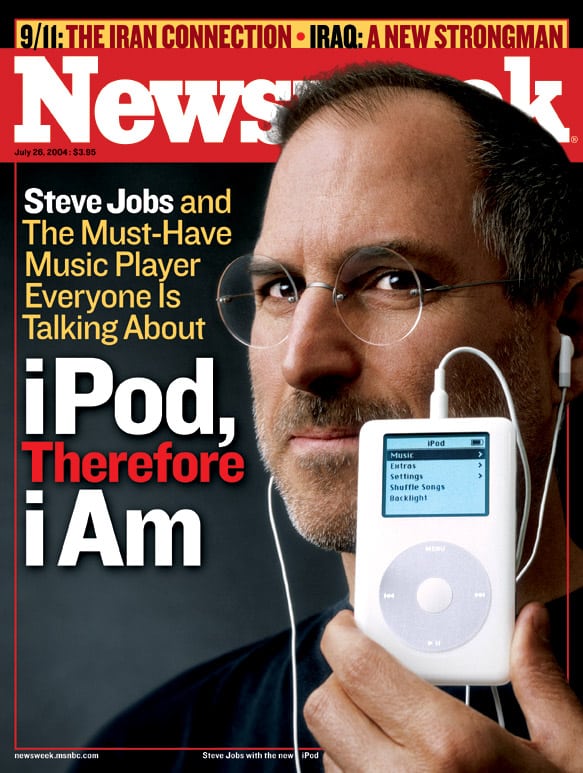
Therefore, he went on a pilgrimage to stars such as Bono from U2, and spoke to leaders in the music industry such as Paul Vidich, head of AOL Time Warner. He asked them for a license for the digital music distribution and demanded to apply a rather simple pricing model (“99 cents per song”). After long hesitation, the record company executives gave in. Many managers in the music and film industries have still not understood that Jobs was the savior and not the gravedigger for the music industry, even though proceeds through iTunes could not compensate for all the losses of record, CD, or DVD sales.
With iPod and iTunes, Steve Jobs changed the laws of the music industry and Hollywood for good and significantly improved the foundation of Apple’s revenue. He was particularly pleased with the fact that he was able to solve the legal conflict with the music label Apple Records during his lifetime and could include his beloved Beatles in the iTunes catalog.
Secret project “Purple 2”
Even more serious consequences for Apple and the industry came with the next major project, which was developed under the code name “Purple 2”. Shortly after the presentation of the first iPod, the Apple leadership dealt with the question of whether Apple should launch a (mobile) phone. In a secret operation, a development group was founded, which remained largely unknown within the company. As part of secret work on a predecessor of the iPad, the engineers in Cupertino had built up a considerable knowledge of touch-screen technology that could be transferred to a smaller screen.
Moreover, a microprocessor ARM11 chip, which could provide sufficient power for complex smart phone applications, finally came on the market. As of 2005, the Apple smartphone designed by Jony Ive gradually materialized. At the MacWorld Expo in January 2007, Steve Jobs boasted, “Today, we’re introducing three revolutionary products of this class. The first one is a widescreen iPod with touch controls. The second is a revolutionary mobile phone. And the third is a breakthrough Internet communications device.” Jobs repeated this list many times until it began to dawn on even the last visitor at the Moscone Center what he meant: “These are not three separate devices – this is one device… and we are calling it iPhone!” The old archrivals from Microsoft attempted to ridicule Apple’s advance. “It’s the most expensive mobile phone in the world,” barked Microsoft CEO Steve Ballmer in a TV interview. “The business customer will reject it because it has no keyboard.” Ballmer was very much mistaken. By the end of the first fiscal quarter 2012 (end of December 2011), Apple had sold 183 million iPhones.
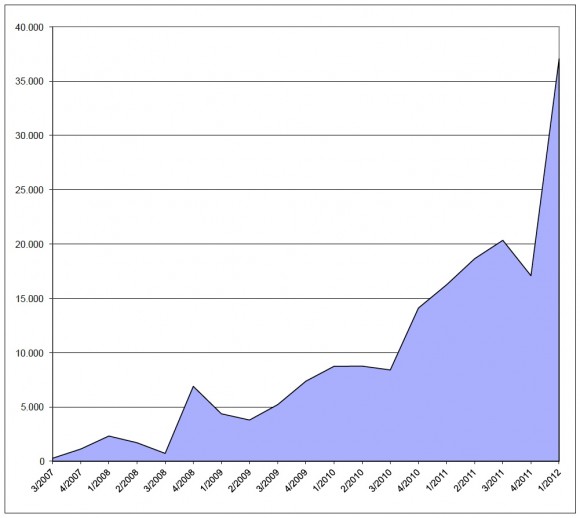
Only Google could keep up with the iPhone, thanks to its Google Android mobile operating system. Until his death Steve Jobs was convinced that the success of Android was only possible because of a betrayal of the long-standing Google boss Eric Schmidt. Between 2006 and 2009, Schmidt was on the Apple Board, where he had seen the development of the iPad and iPhone. His obligations to Apple did not prevent him from pushing Google to develop a competing system. Only when his conflict of interest became very obvious, Schmidt resigned from the Apple board. In January 2010, when the Taiwanese company HTC introduced a new Android-powered smartphone, which dominated many of iPhone’s features, Jobs became furious. “Our lawsuit is saying, “Google, you fucking ripped off the iPhone, wholesale ripped us off. Grand theft. I will spend my last dying breath if I need to, and I will spend every penny of Apple’s $40 billion in the bank, to right this wrong,” said Jobs to book author Isaacson. “I’m going to destroy Android, because it’s a stolen product. I’m willing to go to thermonuclear war on this. They are scared to death, because they know they are guilty.” Apple and many Android OEMs like Samsung and HTC have been fighting for months in court. Despite victories in some points, Apple was not able to stop the winning run of Android. Jobs could take comfort in the fact that two-thirds of the profits of the entire smartphone industry are noted in the books of Apple, and other manufacturers excluding Samsung, are financially getting nowhere.
Steve Jobs had put the first stages of his personal suffering already behind him when he presented the first iPhone in January 2007. In October 2003 he was diagnosed with cancer, which for months he initially wanted to combat without methods of conventional medicine. Finally end of July 2004, he underwent an operation to have a tumor removed from his pancreas. While in the summer of 2007, at the sales launch of the first iPhone, Jobs again seemed quite well, one year later he appeared at the developer conference WWDC 2008, looking decidedly thinner. In early 2009 he retired from public life and underwent a liver transplant.
He returned to the stage two more times, to present both the first and second iPad. It must have been a big victory for Jobs that under his leadership Apple brought a digital tablet to the market, which at the same time established a new device category. His old adversary Bill Gates had presented tablet PCs on shows such as CES over the past ten years, but the devices were too complicated to use, too expensive and flawed, so nobody bought them. At his last public appearance, Steve Jobs fought for a building permit before Cupertino City council for the futuristic new Apple Campus 2, which was designed by British architect Norman Foster.
Legacy
Over the next few years, a monument of a giant circular building will emerge, as Silicon Valley has not yet seen. For Steve Jobs it was not only about converting his legacy into glass, steel and concrete and making it visible for future generations. The most important “product” on which he worked during the past few years, was Apple itself. For Freddie Geier, who worked for Apple in California and managed the operations of Apple Germany and Central Europe for almost two years, Steve Jobs was an “infinite source of inspiration, a visionary and a genius.” “He was the God of style who could make things beautiful and simple and provide products with emotion at the same time”
At the end, the products always benefited from Jobs’ perfectionism. Under the motto “think different”, he succeeded in finding new ways and celebrating the presentation of secret developments in a masterly manner. It was clear to Jobs that there was nobody in the company who was able to take over all these challenges alone. During the past years, he therefore set up a management team and distributed the heavy burden on the shoulders of several successors. Apple CEO Tim Cook is responsible for ensuring that the company works logistically and is making money. During the memorial service for Steve Jobs at the Apple campus in Cupertino, Cook radiated sovereignty and authority, which is now expected from him by the Apple employees, customers and shareholders.
Tim Cook said Jobs had told him that Apple employees, should not ask what he would have done. “Just do what’s right.” He had seen Disney going into crisis after the death of founder Walt Disney, where “everyone spent all their time thinking and talking about what Walt would do.” In the future, the soul of Apple will probably be represented by Jony Ive. The chief designer has to guarantee that Apple will continue to bring products to market, which are desirable solely because of their elegant appearance.
Meanwhile, rumors have also vanished that the Briton was homesick for the UK, – among others because he saw his twin sons in better hands there. His poised presence at the funeral service, with which he freed himself from his (superior) father Steve Jobs, has not only moved the people on the campus. Jony Ive is also trusted to preserve the high level of Apple’s designs without yelling and strong criticism of the employees.
The software expert Scott Forstall will also take a key role in the management team of Apple. Steve Jobs took him in 1992 from Stanford University to NeXT. In 1997 Forstall followed his boss to Apple. He is now responsible for the iOS platform.
“Scott is a gifted genius like Steve. He is in love with every detail, too,” says a former Apple manager. But like Jobs, Forstall is also often difficult and maintained a catastrophic communication culture. The Bloomberg Business Week called Forstall the ” Sorcerer’s Apprentice at Apple” and quoted former Apple software developer Mike Lee: “I once referred to Scott as Apple’s chief a–hole. And I didn’t mean it as a criticism. I meant it as a compliment. You could say the same thing about Steve Jobs.” In such an area of tension, Tim Cook will have the task of softening Forstall’s emotional outbursts and call his younger fellow board member to reason.
In the fine adjustment of the tasks on the management level, Cook, Ive, Forstall, as well as marketing chiefs Phil Schiller and Eddy Cue, who are responsible for the iCloud line at Apple, can count on help: In the end of 2008, seriously ill Steve Jobs lured away the management professor Joel M. Podolny, Dean of the elite Yale School of Management, to found an in-house university at Apple. “Steve was looking to his legacy. The idea was to take what is unique about Apple and create a forum that can impart that DNA to future generations of Apple employees,” said an employee to the “Los Angeles Times”. “No other company has a university charged with probing so deeply into the roots of what makes the company so successful.”
After all, Podolny had almost three years of direct experience with Steve Jobs. Whether and how he will succeed to transfer Steve Jobs’ success formula to future generations of managers from Apple is yet to be seen. ” While there are many great companies, I cannot think of one that has had as tremendous personal meaning for me as Apple.” Podolny wrote in his goodbye to his Yale students. Steve Jobs advised his successors to rely on their own intuition and not on market research.
Steve Jobs quoted Henry Ford, who reportedly said, “If I had asked people what they wanted, they would have said faster horses.” Jobs said, people don’t know what they want until you show it to them. “That’s why I never rely on market research. Our task is to read things that are not yet on the page.”
Update: Oct. 29, 2012:
Apple announces that Scott Forstall, vice president of iOS software, and John Browett, head of retail, are out. Memo cites need for more collaborative environment. Bob Mansfield un-retires and returns to company.
(Source: Apple Press Release)
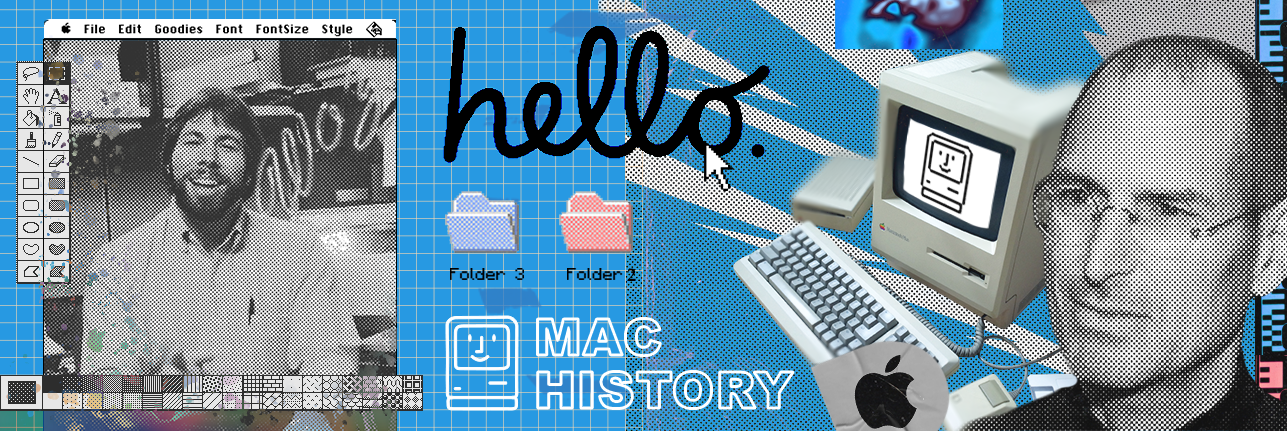
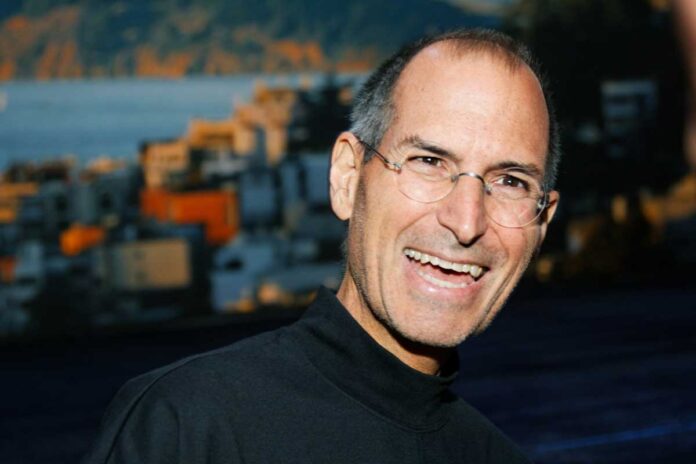
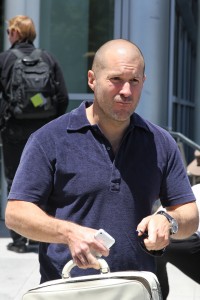
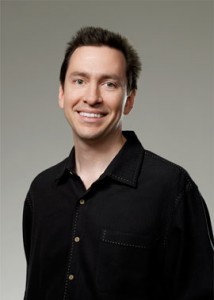

[…] The Legend of Steve Jobs – His Life and Career » Mac History. Steve Wozniak and Steve Jobs […]
[…] time Apple has used an iconic design for an iOS app. The original iOS calculator used a design that paid homage to the classic Braun ET44 calculator. Apple SVP of Industrial Design Jonathan Ive is well-known as […]
[…] time Apple has used an iconic design for an iOS app. The original iOS calculator used a design that paid homage to the classic Braun ET44 calculator. Apple SVP of Industrial Design Jonathan Ive is well-known as […]
[…] time Apple has used an iconic design for an iOS app. The original iOS calculator used a design that paid homage to the classic Braun ET44 calculator. Apple SVP of Industrial Design Jonathan Ive is well-known as […]
[…] of German designer Dieter Rams defender simplicity and functionalism to inspire Steve Jobs and his Apple universe, in addition to Banzi, which would connect his brain chips from the first approach to […]
[…] Dieter Rams, defensor p la simplicidad junto con el funcionalismo que inspiraría a Jobs y a su universo Apple, además p a Banzi, que conectaría los chips p su cerebro a partir p ose primer acercamiento a la […]
[…] was the graphical user interface. I thought it was the best thing I’d ever seen in my life” (Steve Jobs 1995) Inspired by this amazing experience in 1983 Steve Jobs brought out “The Apple […]
[…] influenced the designers at Apple. See here and here. I’m not about to have a rant about the brazen similarities, its more to […]
[…] read about Steve Jobs and Dieter Rams. It talks about how Steve Jobs was highly influenced by the many years of work and design success […]
[…] Dernbach, Christoph. “The Legend of Steve Jobs – His Life and Career.” Mac History, Mac History, 1 Feb. 2015, https://www.mac-history.net/steve-jobs/2012-10-30/the-legend-of-steve-jobs-his-life-and-career […]
[…] Dieter Rams, defensor de la simplicidad y el funcionalismo que inspiraría a Steve Jobs y a su universo Apple, además de a Banzi, que conectaría los chips de su cerebro a partir de ese primer acercamiento a […]
[…] should regard Steve Jobs as a true legend who always led by example. He has an amazing and inspiring story that should instill a sense of […]